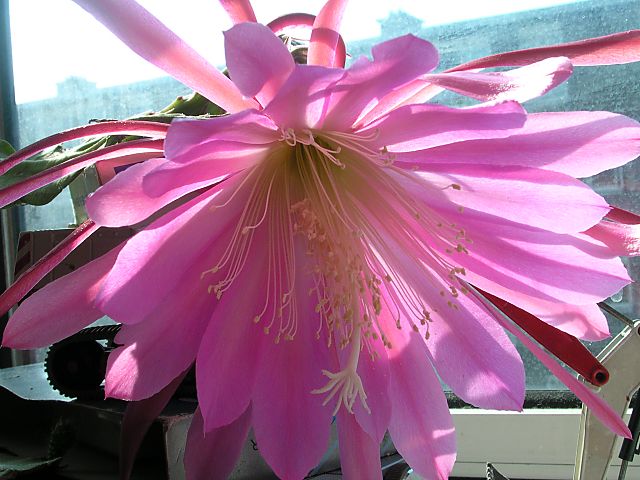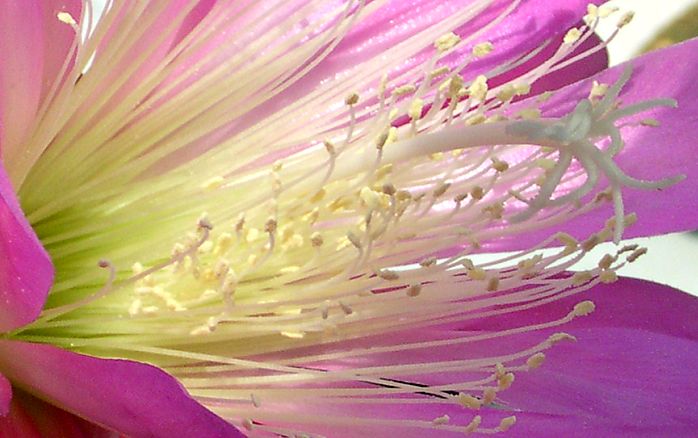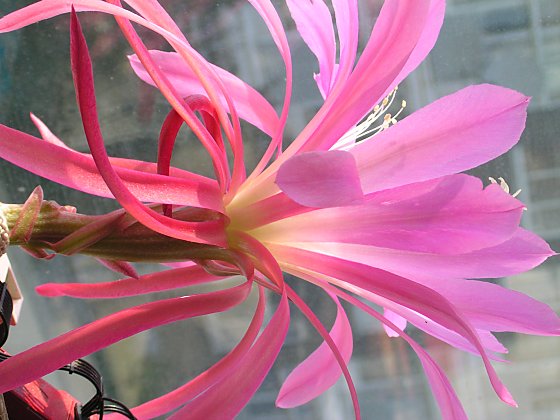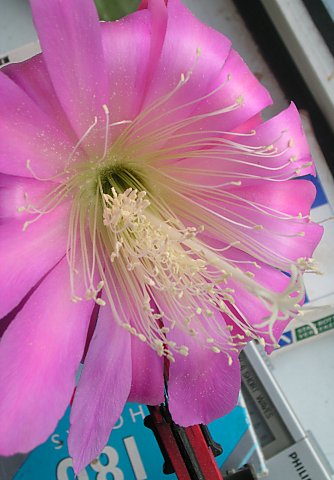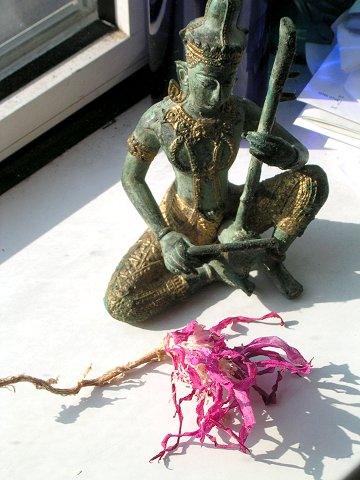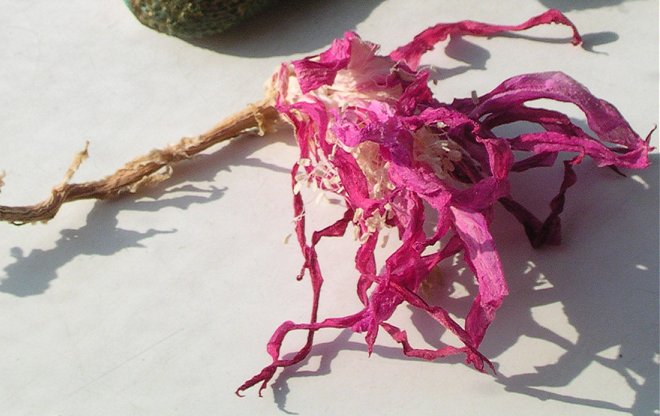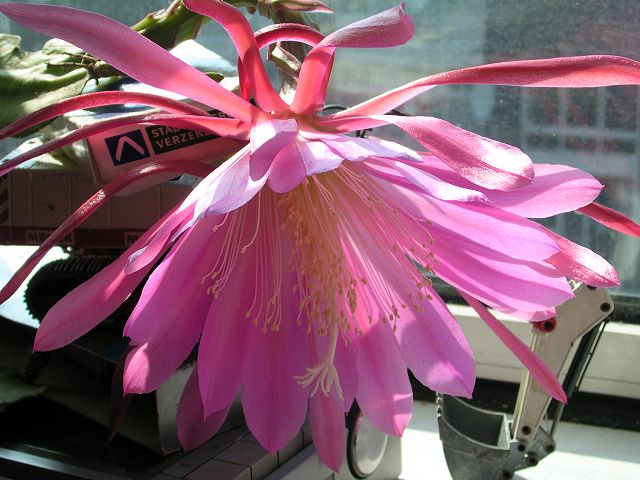
|
Deze foto's van een prachtige grote bladcactusbloem werden mij in juli 2005 toegestuurd door Oeday Kanhaisingh uit Amsterdam. Zijn broer Soertie had de plant op zijn kantoor staan, de bloem was ongeveer even groot als van de Epiphyllum waar ik een paar jaar geleden opmerkzaam op werd gemaakt toen ik durfde beweren dat deze planten nooit zulke grote bloemen hebben als de Koningin van de Nacht (Selenicereus grandiflorus). In India, waar de grootouders van deze Surinaamse broers vandaan komen, heet de plant Nargis. Vermoedelijk groeien deze planten daar uitbundiger dan bij ons in Nederland, door het warmere klimaat zullen ze er ongetwijfeld buiten kunnen staan en vrucht kunnen zetten. |
These pictures of a beautiful big Phyllocactus flower were mailed to me in July 2005 by Oeday Kanhaisingh from Amsterdam. His brother Soertie has this plant in his office, the flower was about as big as those of the
Epiphyllum someone brought to my notice when I dared suppose that these plants never bear flowers as big as those of the Queen of the Night (Selenicereus grandiflorus). In India, where the Surinam Kanhaisingh brothers have their roots (their grandparents came from India) the plant is called Nargis. Probably these plants can grow outside there, as the climate is much warmer than with us in the Netherlands, no doubt they will even set fruit there. |
